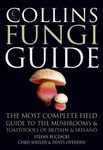![Applied Mycology and Biotechnology, Volume 3: Fungal Genomics Applied Mycology and Biotechnology, Volume 3: Fungal Genomics]()
Click to have a closer look
About this book
Contents
Related titles
About this book
The purpose of this volume is to highlight wide-ranging applications of genomics in the area of applied mycology and biotechnology. The volume covers: a brief overview on fungal genomics; meiotic recombination in fungi; molecular genetics of circadian rhythms; genome sequencing; transposable elements; mitochondrial genomes; ribosome biogenesis; pathogenicity genes; genetic improvement of yeasts; microarrays: techniques and applications; fungal germplasm and data bases. Although it is difficult to develop a comprehensive volume on fungal genomics because of the range and complexity of the emerging knowledge, an attempt has been made to bring together pertinent information that should serve the needs of the reader, provide a quick reference to material that might otherwise be difficult to locate, and furnish a starting point for further study.
Contents
Fungal genomics - an overview, A.E. Desjardins, D. Bhatnagar; meiotic recombination in fungi - mechanisms and controls of crossing-over and gene conversion, B. Lamb; molecular genetics of circadian rhythms in neurospora crasa, A. Correa, A.V. Greene et al; genome sequencing, assembly and gene prediction in fungi, B. Loftus; fungal transposable elements - inducers of mutations and molecular tools, F. Kempken; fungal mitochondrial genomes, plasmids and introns, G. Hausner; evolution of the fungi and mitochondrial genomes, C.E. Bullerwell, J. Leigh et al; ribosome biogenesis in yeast - RNA processing and quality control, R.N. Nazar; fungal pathogenicity genes, P. Tudzynski, A. Sharon; genetic improvement of baker's yeasts, P.V. Attfield, P.J.L. Bell; enzyme production in industrial fungi - molecular genetic strategies for integrated strain improvement, K.M.H. Nevalainen, V.S. Te'o; global expression profiling of the lignin degrading fungus ceriporiopsis subvermispora for the discovery of novel enzymes, D.S. Yaver, B. Weber, J. Murrell; Microarrays - technologies and applications, Leming Shi, Weiming Hu et al; fungal germplasm and databases, K. McCluskey.
Customer Reviews



































